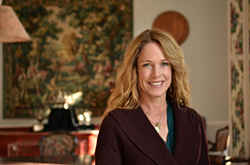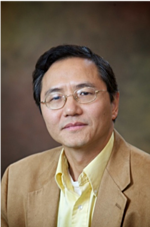The CDC recently updated their guidance explaining that the novel coronavirus can be transmitted through aerosolized particles that can remain suspended in the air for hours and travel farther than 6 feet (1). As the COVID-19 pandemic has moved across the world, scientists are working around the clock to better understand how it is transmitted, the details of the symptoms and illness, and how to stop the spread of the virus. Engineers including Dr. Shelly Miller and Dr. Jianshun “Jensen” Zhang have been working to inform the public and leaders on the most current science around airborne transmission via inhalation of respiratory aerosolized particles and droplets.
As schools and childcare facilities consider reopening, the science on indoor air quality is critical to establishing and implementing best practices to ensure safer environments for students and staff. Superspreading events have resulted in large numbers of people being infected at a single event, thought to happen as a result of infected asymptomatic or mild symptomatic persons in crowded unmasked environments with poor ventilation. During this webinar, Dr. Miller reviewed the transmission routes, discussed superspreading events, and presented a summary of her work on the Skagit Valley Chorale outbreak and the musicians and performers aerosol study as well as discuss the benefits of ventilation, filtration and germicidal ultraviolet light.
Indoor air quality (IAQ) is vital to human health, wellbeing and performance as people typically spend over 70-80% of their time indoors. Various IAQ strategies have been developed in the past including source control, ventilation, and air cleaning/purification. Dr. Zhang presented his recent publication which evaluated the potential and limitation of these strategies, and how they can be integrated to reduce the risk of SARS-COV-2 infections via airborne transmission. The analysis is based on the well-established Wells-Riley Equationfor evaluating the probability of infection as a function of the infectious dose exposure of susceptible occupants in an indoor air space. It covers the multi-scales of the built environment – from the whole building system to rooms, and to the microenvironment around the occupants that directly affect the human exposure and intake of the virus-containing aerosols. Existing data from previous research on the effectiveness of various IAQ strategies at the different environmental scales was discussed along with an analysis of their potential and limitation for reducing the risk of SARS-COV-2 infections. Both individual and combined strategies were assessed. Results show that available IAQ control strategies can be integrated to reduce the risk of SARS CoV-2 infection by a factor of 8.5 to over 500, depending on the combinations of the strategies and how well they are implemented (2).
Featured Speakers
 Shelly L. Miller, PhD, is a Professor of Mechanical Engineering and faculty in the Environmental Engineering Program at the University of Colorado Boulder, holding an M.S. and Ph.D. in Civil and Environmental Engineering from University of California, Berkeley and a B.S. in Applied Mathematics from Harvey Mudd College. Dr. Miller teaches about and investigates urban air quality and works diligently to understand the impact of air pollution on public health and the environment. She is also an expert on indoor environmental quality including airborne infectious disease transmission and control and air cleaning technologies. Dr. Miller is a member of the Academy of Fellows of the International Society for Indoor Air and Climate (ISIAQ) and is also an Associate Editor for Environmental Science and Technology. Dr. Miller has published over 80 peer reviewed articles on air quality, authored a Chapter on Indoor Air Quality in the Environmental Engineering Handbook, is an active scientist on twitter, and publishes open access as often as possible.
Shelly L. Miller, PhD, is a Professor of Mechanical Engineering and faculty in the Environmental Engineering Program at the University of Colorado Boulder, holding an M.S. and Ph.D. in Civil and Environmental Engineering from University of California, Berkeley and a B.S. in Applied Mathematics from Harvey Mudd College. Dr. Miller teaches about and investigates urban air quality and works diligently to understand the impact of air pollution on public health and the environment. She is also an expert on indoor environmental quality including airborne infectious disease transmission and control and air cleaning technologies. Dr. Miller is a member of the Academy of Fellows of the International Society for Indoor Air and Climate (ISIAQ) and is also an Associate Editor for Environmental Science and Technology. Dr. Miller has published over 80 peer reviewed articles on air quality, authored a Chapter on Indoor Air Quality in the Environmental Engineering Handbook, is an active scientist on twitter, and publishes open access as often as possible.

Jianshun “Jensen” Zhang, PhD, is Professor and Director of Building Energy and Environmental Systems Laboratory (BEESL), Department of Mechanical and Aerospace Engineering at Syracuse University (SU), New York, USA, and a Visiting Professor of the School of Architecture and Urban Planning at Nanjing University, China. He received his Ph.D. from University of Illinois at Urbana-Champaign and worked at National Research Council of Canada for 8 years before he joined SU. He is a co-leader of the SU-wide research cluster in Energy and Environment that promotes and coordinates multi-disciplinary research on the campus. Dr. Zhang is an expert in room air and contaminant distribution, material emissions, air purification, building enclosure performance, and combined heat, air, moisture and pollutant simulations (CHAMPS) for integrative design and intelligent controls of buildings. He has authored/co-authored over 200 technical papers and 3 American national standards. He is Associate Editor of Journal of Science and Technology for the Built Environment (STBE, formerly ASHRAE HVAC&R Research Journal) and The International Journal of Ventilation, and serves as a Member of the Editorial Boards of Building Simulations—an international Journal, International Journal of High-Rise Buildings, and the International Journal of Architectural Frontier Research. He is Fellow of ISIAQ and ASHRAE, and current Chairman of the International Association of Building Physics.
This webinar was moderated by Karen Wang, PhD, director of CHE. It lasted for 60 minutes and was recorded for our call and webinar archive.
